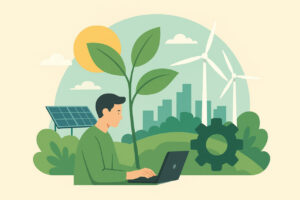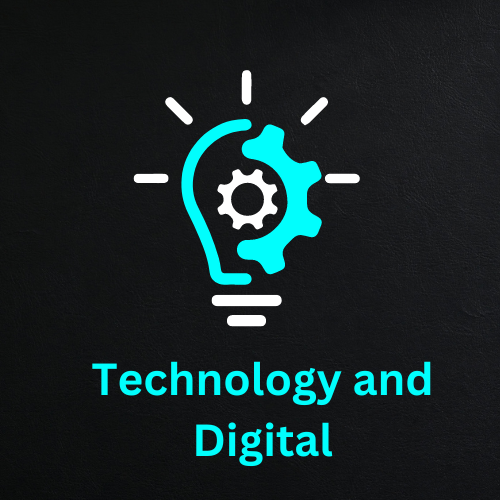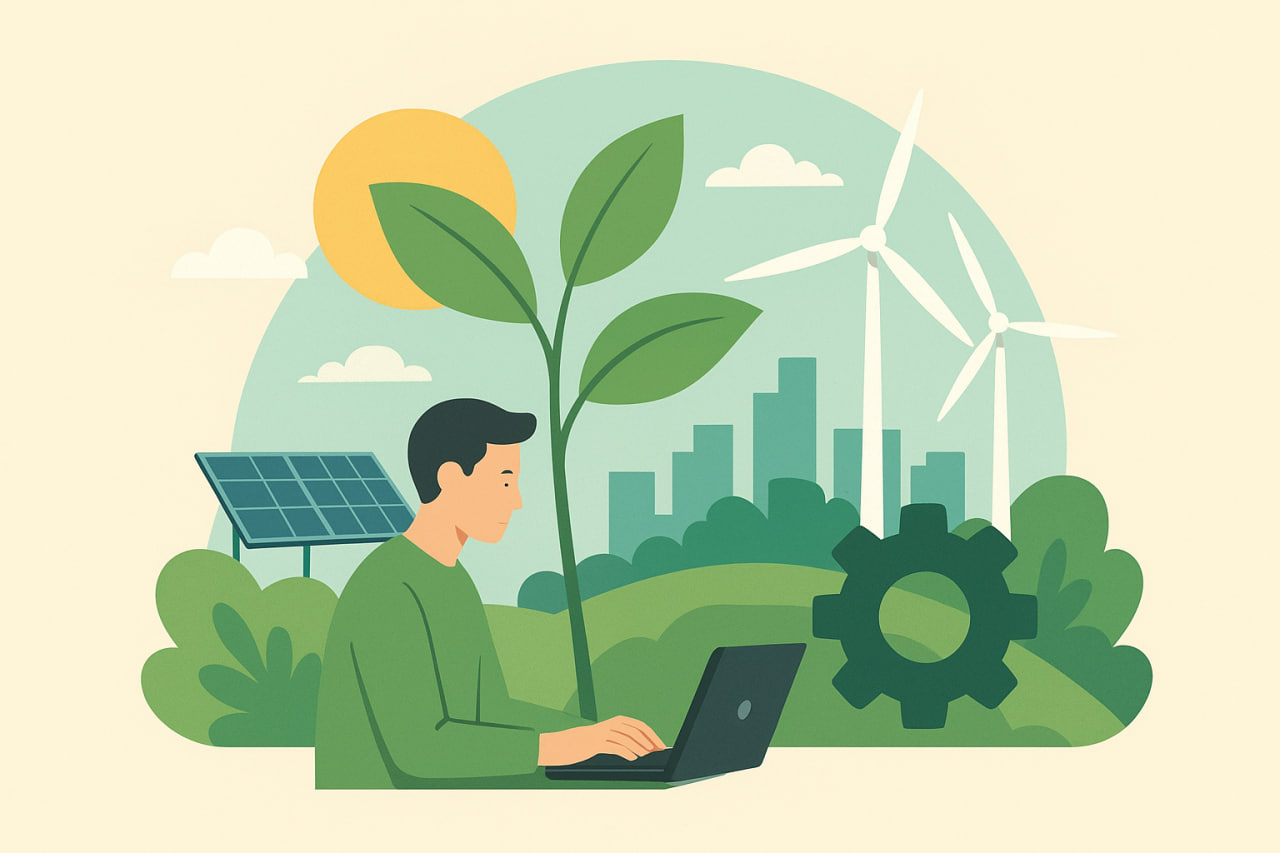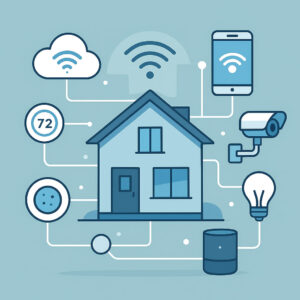The Role of IT in Sustainable Innovation: Shaping a Greener Future

In a world increasingly defined by climate challenges, resource scarcity, and the urgent need for environmental responsibility, information technology (IT) has emerged as a powerful force for sustainable innovation. IT is no longer just about efficiency or connectivity—it has become the invisible engine driving solutions that reconcile technological advancement with ecological stewardship. In 2025, the role of IT in shaping sustainable practices is more critical than ever, merging human ingenuity with digital intelligence to create a future that is both prosperous and responsible.
Understanding Sustainable Innovation Through IT
Sustainable innovation refers to creating products, services, or processes that meet present needs without compromising the ability of future generations to thrive. IT empowers this innovation by providing the tools, analytics, and connectivity necessary to rethink traditional practices.
From cloud computing and big data analytics to AI and IoT, technology enables organizations to optimize resource usage, reduce waste, and develop environmentally friendly solutions. For instance, smart grids powered by IT can monitor and adjust energy consumption in real-time, significantly reducing carbon footprints while maintaining operational efficiency.
Practical Tip for Organizations:
Start by integrating data-driven sustainability tools into existing workflows. Tools like energy-monitoring software or predictive analytics platforms can provide actionable insights to minimize environmental impact without major infrastructure changes.
How IT Enables Sustainable Practices
Information technology serves as the backbone for a wide array of sustainable initiatives. Its capabilities allow for smarter decisions, enhanced efficiency, and measurable environmental outcomes. Below are some key ways IT contributes to sustainable innovation:
1. Data-Driven Resource Management
IT systems can track, analyze, and optimize resource use across industries. Manufacturing plants, for example, can leverage sensors and IoT networks to monitor energy and water consumption in real-time. This allows companies to identify inefficiencies, reduce waste, and maintain high productivity levels while minimizing environmental impact.
2. Cloud Computing and Virtualization
Cloud-based solutions reduce the need for physical infrastructure, which in turn decreases energy consumption and e-waste. By virtualizing servers and consolidating workloads, organizations can operate with smaller footprints while enjoying scalability and flexibility. In 2025, sustainable cloud practices have become a benchmark for eco-conscious enterprises worldwide.
3. Artificial Intelligence for Environmental Solutions
AI algorithms can predict energy demands, optimize logistics, and even assist in climate modeling. For example, AI-powered traffic systems can reduce urban congestion, leading to lower emissions. Similarly, AI can help optimize supply chains to minimize carbon-intensive transport, demonstrating how intelligent computing drives sustainable innovation.
4. Internet of Things (IoT) in Smart Sustainability
IoT devices enable smart homes, factories, and cities that respond to real-time environmental conditions. Sensors track air quality, water usage, and energy consumption, sending actionable insights to administrators. Imagine a factory where machines automatically power down when not in use, or an office building that adjusts lighting based on natural sunlight. These innovations are no longer hypothetical—they are the new normal, powered by IT.
The Emotional Impact of Sustainable IT
Technology often evokes feelings of awe, but when applied to sustainability, it inspires hope. IT in sustainable innovation demonstrates that human progress does not have to come at the expense of the planet. Each algorithm optimized, every energy-saving measure implemented, and every data-driven decision taken represents a step toward harmony between humanity and the Earth.
Consider a scenario where a city integrates AI-driven energy management systems. Residents notice reduced electricity bills and cleaner air, and they feel connected to a broader environmental mission. This emotional resonance—knowing that digital innovation directly contributes to ecological well-being—is perhaps one of the most profound benefits of IT-led sustainable innovation.
Reflection for Readers:
How does your organization or household use technology to reduce environmental impact? Small adjustments, like smart energy management apps or AI-based analytics, can have meaningful ripple effects on sustainability.
Challenges in Implementing IT for Sustainability
While IT offers incredible opportunities, challenges remain. Cybersecurity, data privacy, and the environmental cost of producing hardware can counterbalance some benefits if not managed carefully. Additionally, integrating sustainable IT solutions often requires upfront investment, organizational change, and continuous monitoring.
Despite these challenges, the long-term benefits—cost savings, ecological responsibility, and competitive advantage—make the endeavor worthwhile. Companies that fail to adopt sustainable IT strategies may not only harm the environment but risk losing relevance in a market increasingly driven by eco-conscious consumers.
Practical Tip:
Adopt a phased approach. Begin with energy-efficient hardware, cloud migration, or software-based optimization. Gradually integrate advanced AI and IoT solutions to expand the sustainability impact while managing cost and complexity.
Global Trends Shaping Sustainable IT in 2025
Several trends are defining the future of IT-driven sustainability:
- Green Cloud Computing: Major providers are committing to renewable energy-powered data centers.
- AI-Powered Climate Solutions: AI tools are increasingly used to predict environmental risks and optimize energy consumption.
- IoT-Enabled Smart Cities: Urban areas are leveraging connected devices to monitor resources and improve quality of life.
- Blockchain for Transparency: Supply chain tracking using blockchain ensures sustainable sourcing and ethical practices.
These trends show that IT is not merely a passive tool—it is an active agent for change, driving sustainable innovation at every level of society.
Future Outlook: IT as a Steward of the Planet
The journey of IT in sustainable innovation is just beginning. Emerging technologies like quantum computing, edge computing, and AI-driven predictive analytics promise to make sustainability solutions faster, smarter, and more accessible. By 2030, IT is expected to be central to climate action plans, renewable energy optimization, and global sustainability initiatives.
Ultimately, IT has the potential to transform how society perceives progress. No longer is advancement measured solely by economic growth or technological sophistication. Success will also be measured by how efficiently humanity protects its home planet while pursuing innovation.
Conclusion: Embracing IT for a Sustainable Future
The role of IT in sustainable innovation is profound, emotional, and essential. It demonstrates that human ingenuity and technological advancement can coexist with environmental responsibility. Each piece of software, every IoT device, and all data-driven decisions contribute to a future where growth is aligned with the planet’s needs.
In 2025, organizations and individuals alike are presented with a choice: continue with unsustainable practices or embrace IT-driven innovation that safeguards resources for generations to come. The path is clear. Through intelligent, responsible, and innovative IT solutions, a sustainable, hopeful, and thriving world is not just possible—it is within reach.
Call to Action: How is your organization leveraging IT for sustainability? Share your insights and experiences in the comments below to inspire a global conversation about technology, responsibility, and the future of our planet.




